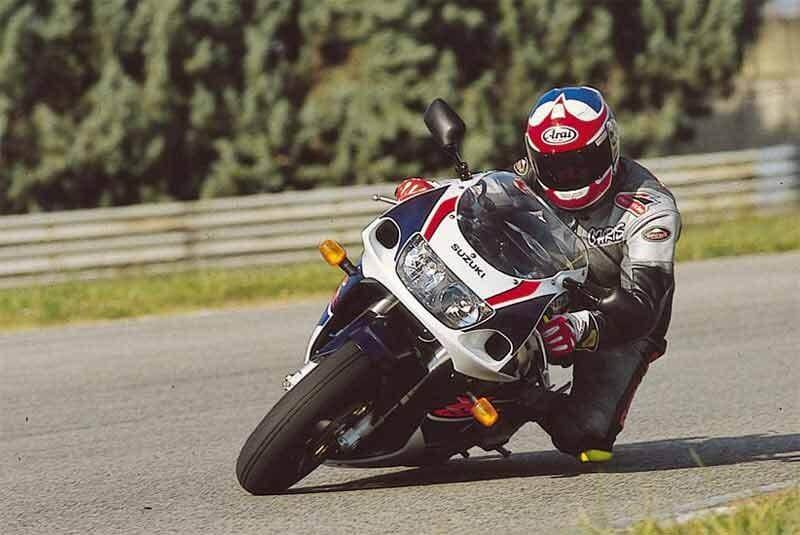Part 2: TOP TEN 1990s SPORTBIKES

Lets continue with the remaining Top 5 1990s Sportbikes
5. Honda RFVF750R RC45 (1994 – 2002)

Honda RVF750 RC45
While the RC45 looked similar to the RC30, it was new from the ground up.
As WSB rules require the specs of race bikes to be as close to production motorcycles, manufacturers had to produce motorcycles that were “ready to race.”
Honda’s ubiquitous PGM-FI (Programmable Fuel-Injection) system was fitted to a road motorcycle for the first time. The V-4 motor had a “Big Bang” close firing order, the pistons were lightweight, the connecting rods were titanium, the cylinder liners were impregnated with ceramic and graphite, and many engine components were cast magnesium.
The RC45 was very expensive as a result but it didn’t stop race teams and wealthy private customers from buying each every one of the 200 produced.
4. Ducati 916 (1994 – 1998)

Ducati 916 SP - courtesy of pinterest.com
Kawasaki beat Ducati to the 1993 WSB title. Infamia! Screamed the Ducatisti. The 888’s engine was enlarged to 916cc. Legendary designer Massimo Tamburini and Sergio Robbiano designed a bike around that engine, resulting the most beautiful motorcycle ever built.
The 916 broke both design and technical rounds with features such as a single-sided swingarm, underseat exhausts, 250cc-like profile and sharp twin headlights. It was the 916 which influenced motorcycle designs in the last 20 years.
The 916 and its 996 variant went on to win six WSB titles in eight years.
3. GSX-R750 SRAD (1996 – 1999)

Suzuki GSX-R750 - Courtesy of www.xooimage.com
Suzuki had always been the purveyor of new motorcycle technology. The 1985 GSX-R750 “Slabside” was testament to this philosophy. It was a revelation when it was introduced, producing 100 bhp while weighing only 408 lb. (185 kg), wet. However, it began to gain weight as the years progressed until the stage that it wasn’t competitive anymore.
So, in 1996, Suzuki launched the new GSX-R750 SRAD.
Making its debut was the twin-spar aluminium frame derived from Kevin Schwantz’s RGV500 race bike, saving 20kg from its immediate predecessor. Following the GSX-R750 of 1985, it weighed in at 428 lbs. (194 kg), wet. It was lighter than all 600cc machines of the time.
Fans called it the “SRAD,” which is the abbreviation for Suzuki Ram-Air Direct. Intake air pressurizes the airbox at high speeds, translating to more power. Surely enough, it made 128 bhp, matching the Honda CBR900RR’s.
2. Yamaha YZF-R1 (1998 – present)

Yamaha YZF-R1
Yamaha’s FZR1000 was thoroughly outclassed by the CBR900RR in 1992 and sales suffered.
Yamaha retaliated with the YZF-R1 in 1998. Just as what Honda and Suzuki did, Yamaha gave the R1 a liposuction and weight loss regiment, and installed the all-new 150-bhp 1000cc. The gearbox was “stacked”, as technical feature which has been followed by virtually every manufacturer until this day.
1. Suzuki GSX-1300R Hayabusa (1999 – present)

Suzuki GSX-1300R Hayabusa - Courtesy of www.motorcyclenews.com
The ‘Busa remains the fastest production motorcycle. When it hit 312 km/h in 1999, European regulatory bodies threatened a ban, unless the top speeds are capped. Consequently, motorcycles were limited to 299 km/h from 2001 onwards.
The Hayabusa was named after the Japanese peregrine falcon which could hit 200 mph in a dive, The ‘Busa out-accelerated everything for years until Kawasaki brought on the ZX-14. Even now, it’s best to get out of its way when you see it approaching.